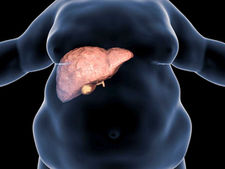
Pulmonary Embolism
What is Pulmonary Embolism?
Pulmonary embolism is a blood clot that blocks and stops blood flow to an artery in the lung. In most cases, the blood clot starts in a deep vein in the leg and travels to the lung. Rarely, a clot forms in a vein elsewhere in the body.
What Causes Pulmonary Embolism?
Blood clots can form in the arteries and veins. Clots that form in the veins are called venous clots. Leg veins can be superficial veins (close to the skin surface) or deep veins (close to the bone and surrounded by muscle). Venous clots most commonly occur in the deep veins of the legs. This is called deep vein thrombosis (DVT). When a clot forms in the deep veins of the leg, there is the potential for part of the clot to break off and travel through the blood to another part of the body, usually the lung. DVT is the most common cause of pulmonary embolism.
Other less common sources of pulmonary embolism are fat embolism (usually associated with breaking a large bone), amniotic fluid embolism, air bubbles, and deep vein thrombosis in the upper body. Clots can also form at the tip of an indwelling intravenous (IV) catheter, break off, and travel to the lungs. What are the Symptoms of Pulmonary Embolism? Each person may experience symptoms differently. The most common symptoms are: Sudden shortness of breath (most common) Chest pain (usually worse with breathing) Feeling anxious Feeling lightheaded, lightheaded, or fainting Irregular heartbeat Palpitations Coughing up or coughing up blood Sweating Low blood pressure Also known as deep vein thrombosis (such as: DVT symptoms may also occur: Pain in the affected leg (may occur only when standing or walking) swelling in the leg Pain, redness, or warmth in the leg(s) Redness and/or discolored skin
How is Pulmonary Embolism Treated?
Blood thinners (anticoagulant) drugs that reduce the blood's ability to clot are used in the treatment. These medications are used to stop the clot from growing and prevent clot formation. Blood thinners can be given via pills, subcutaneously, or injection (intravenously). Treatment usually takes 3-6 months.
In cases with previous blood clot conditions, treatment is planned longer. In cases receiving treatment for another disease such as cancer, blood thinner use is continued as long as the pulmonary embolism risk factor persists. Treatment can sometimes be continued for life, especially in people with a genetic predisposition to clot formation. When pulmonary embolism is life-threatening, hospital-based treatments are used to remove or break up clots.
Medicines called thrombolytics are drugs that can quickly dissolve blood clots. They are used to treat large blood clots that cause severe complaints. In some cases, a tube called a catheter is used to reach the blood clot. Rarely, surgery may be required.
FOR INFORMATION AND APPOINTMENT, YOU CAN LEAVE YOUR NUMBER OR ASK OUR EXPERTS
YOU CAN LEAVE YOUR NUMBER FOR INFORMATION AND APPOINTMENT AND ASK QUESTIONS TO OUR EXPERTS



-04.png)
-06.png)
-05.png)
-08.png)
-07.png)























